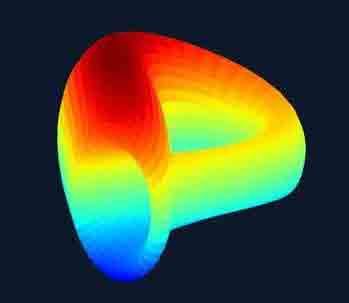Fully Diluted Market Valuation (FDV): Understanding Its Significance in the Crypto World
In the dynamic landscape of cryptocurrencies, understanding key metrics is crucial for investors and enthusiasts alike. One such metric that often sparks curiosity and debate is the Fully Diluted Market Valuation (FDV). In this comprehensive article, we’ll delve into what FDV is, why it matters, and how it impacts the crypto ecosystem.
What Is Fully Diluted Valuation (FDV)?
Fully Diluted Valuation (FDV) represents the total value of a cryptocurrency project when all its tokens are in circulation. Imagine it as the grand sum of all tokens, including those yet to be minted or released. Just like the total number of issuable shares in the stock market, FDV provides a holistic view of a project’s potential.
Here are the key points about FDV:
-
Token Supply Dynamics:
- The total supply of tokens can fluctuate due to various factors:
- Token Minting: New tokens are generated through mining or other mechanisms.
- Rewards and Staking: Stakers and liquidity providers receive tokens as rewards.
- Vested Tokens: Some tokens are released over time.
- Token Burning: Deflationary tokens decrease the total supply as tokens get burnt.
- These supply changes impact FDV.
- The total supply of tokens can fluctuate due to various factors:
-
Calculation:
- FDV is calculated using the formula:
FDV=Token Price×Total Supply
- It projects the cryptocurrency’s market cap when all tokens are in circulation.
- FDV is calculated using the formula:
-
Investor Insight:
- Investors use FDV to assess a project’s future potential.
- A high FDV relative to the current market cap may signal significant supply inflation and sell-side pressure.
Practical Examples of FDV
Two major cryptocurrencies will be considered to demonstrate how to calculate FDV: Bitcoin (BTC) and Cardano (ADA).
FDV of Bitcoin (BTC)
Going by the rules, to calculate the FDV of Bitcoin, the first step is to determine its current market price, approximately $21,000 as of March 12, 2023, and multiply it by the second variable— the maximum supply—which is fixed at 21,000,000. The result will give $4.41 billion. This would be the FDV of Bitcoin if it were to be in circulation in the market at the present price.
FDV of Cardano (ADA)

The FDV for Cardano is the multiplication of its market price at press time—$0.32—and maximum supply—45,000,000,000— which gives approximately $14.4 billion.
Using this formula in determining the FDV of any token comes with no frills. It’s important to note that it’s impossible to statically determine the FDV for certain cryptocurrencies since they don’t have a maximum supply.
To get additional details about Cardano (ADA), check out the tokenomics on platforms such as Coinmarketcap and Coingecko; you’ll discover more insight into how tokens are allocated over time and how it contributes to its overall FDV.
For instance, Cardano (ADA) is distributed in three ways; 57.60% is allocated to ICO, 11.50% is assigned to the team, and 30.90% is allocated to staking rewards. The team’s allocation and staking are released over time and will affect the FDV of the token. These give investors information on whether the token is a good buy.
Market Capitalization Vs Fully Diluted Value
While both market cap. and FDV might appear confusing; it isn’t; it’s straightforward to understand and differentiate both.
Market capitalization is simply the number of tokens in circulation multiplied by the current price of the token. Unlike Fully Diluted Value, which is the maximum number of tokens that can be supplied into the market multiplied by the current price of the token. Market cap focuses on available supply, while the latter deals with a token’s maximum or total supply. Investors mainly use the market cap to determine a token’s present valuation. FDV is a metric to determine a token’s future valuation and its prospects; considering how relevant the token will be in the long run—will it be worth it?
Market cap and FDV share a number of similarities. They are both affected by the increase in the token supply and demand—which is reflected in the price of the assets.
Understanding High and Low Fully Diluted Value
As mentioned above, a low FDV signals a potential buy for investors and a high FDV suggests otherwise.
High or low fully diluted value can only be determined when compared with a token’s market capitalization. Usually, a low, fully diluted valuation is an excellent signal to investors, that is, when it’s suitably higher than the market cap. However, no rule or specific requirement determines what a suitable FDV is, though investors consider an FDV as low when it’s significantly lower than ten times the market cap. Anything higher is a caution on investors’ lookout. High FDVs result from two problems: inflation tokenomics and huge selling pressure.
Inflation Tokenomic:
Inflationary tokenomics is similar to the idea of inflation and how market participants purchasing power decreases over time. A high FDV indicates that a token is subject to an increasing supply circulating; the effect is buyers’ purchasing power decreases. Essentially, buyers will pay more to receive a limited number of tokens. A steady supply that causes inflation can only be controlled if there’s an equivalent or greater demand to absorb its effect. A high inflationary tokenomics is a sign that a token tends to fail. A typical example is TryHards (TRY) —an NFT game powered by polygon—which quickly lost value due to inflationary tokenomics.
Huge Selling Pressure:
Investors are worried about where they put their money. They seek growth and potentially huge returns, not the other way around. Knowledge of how to effectively use fully diluted valuation in highlighting the profitability of a token becomes more apparent; investors can make smarter investment decisions about a token. If the FDV is high, the token holders with the knowledge see the token as overvalued and begin to sell the token leading to high-selling pressure, and the value declines rapidly. This generally taints the market value and the potential of such a project behind the token.
How Important Is the Fully Diluted Value
Fully diluted value is a metric used in determining the future of a coin. It takes into account the possible factors, such as supply. It can be combined with other factors, including technical analysis and fundamental analysis, to determine whether a coin is undervalued and will be relevant over the years.
- Fully diluted valuationisn’t a better measure on its own; it needs to combine other factors, such as market capitalization, the team behind the token, and the solution they are introducing. With this, even when a token has a high FDV and other factors mentioned are substantial, it adds information to the investment decision. Investors may invest partly in a token rather than neglecting or going all in on the token.
- Fully diluted valuationprepares investors ahead of potential inflationary tokenomics. This added information lets investors and token holders make smart decisions, precisely drafting their short and long-term goals for the token. This removes any blind spots and allows them to make concise and deliberate decisions.
Example of High FDV tokens That Outperform
As mentioned earlier, a high FDV should be one of many factors in consideration when deciding to be a token holder or an investor in tokens. There are multiple factors to consider: the token’s popularity, the demand, the team, and the solution behind the token’s blockchain. Several examples of tokens with a high FDV have maintained their integrity. Some of them are:
Chainlink (LINK)

An excellent example of cryptocurrency with a high FDV but tangible value is Chainlink. Link, its native token, has a maximum supply of 1 billion, with only 491 million circulating the market. And with a current price of $7.19, the FDV sits at $7 billion and has a market capitalization of $3.4 billion. It has a slightly high FDV, but this doesn’t mean it’s a rub-off.
Chainlink has a solid use case that positions it rightly. It develops the framework for bringing real-world data onto the blockchain network, such as price feed and proof-of-reserve used by multiple cryptocurrency exchanges. With this, Chainlink can be considered for purchase.
Avalanche (AVAX)
Avalanche is known for its high throughput, low cost, and environmentally friendly blockchain. Which other cryptocurrency projects build on. AVAX has a total market capitalization of $5.7 billion and an FDV of $12.6 billion as of March 2023, putting it on the list of tokens with a high FDV. But similar to Chainlink, Avalanche has a solid ecosystem that relies on its blockchain for operation.
FileCoin (FIL)
Filecoin is a decentralized storage network built on interplanetary File Storage (IPFS) that stores data cheaply. Its native token FIL is used to conduct transactions on the Filecoin chain. The fully diluted valuation of FIL as of March 2023 is $14 billion, while its market cap is $2 billion. It has a maximum supply of 1.96 billion and a circulating supply of 403 million, nearly five times the FDV.
This is a significantly high FDV; however, the concrete use case built around Filecoin makes it stand out. It currently sits as the blockchain’s leading decentralized storage facility, which positions it for more success.
Curve DAO (CRV)

Curve DAO is another example of a token with a high FDV. The token has a circulating supply of 769 million and a maximum supply of 3.3 billion; at $1.04 as of March 2023, the FDV is $3.2 billion— four times the market capital.
However, CRV has a significant use case in decentralized finance, making it attractive in the long-term run.
A popular crypto analyst, Miles Deutscher, explains how FDV is underrated while comparing AVAX and FTM.
Bottom line
FDV is a helpful metric for investors interested in purchasing a token and getting into the cryptocurrency niche. It helps them properly along their investment choice with their long and short-term plan.
Using indicators such as the FDV in determining the performance of a token in the volatile crypto market. FDV gives insight into whether a token is undervalued or overvalued and how other factors, such as supply and demand, contribute to these effects.
Frequently Asked Question
What’s the difference between fully diluted value and market cap?
Fully diluted valuation is derived by multiplying the market cap and the total supply. While market cap deals with the present valuation, FDV is about the future valuation of a token.
Why is FDV important in crypto?
Fully diluted value is useful additional metric investors now use to determine how valuable a token is and whether or not to add it to their portfolio.
Can I invest in a token with a high FDV?
FDV shouldn’t be used as a standalone metric; the solution built around the blockchain, alongside other factors, should form your bias. A token with a high FDV and an indispensable solution might be a worthy trial.
What is an investor’s win rate using FDV?
There isn’t a particular win rate attached to using the fully diluted valuation as a trading strategy, just as there isn’t any other strategy crypto investors use. Using FDV metrics right and combining them with other factors and strategy is crucial for a better win rate.
This article does not contain investment advice or recommendations. Every investment and trading move involves risk, and readers should conduct their own research when making a decision.
